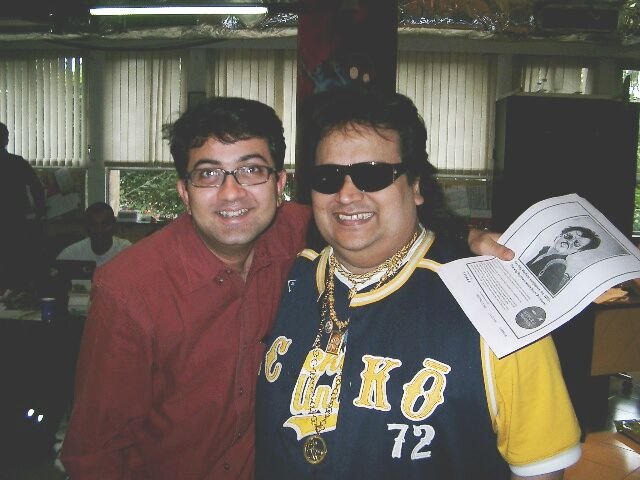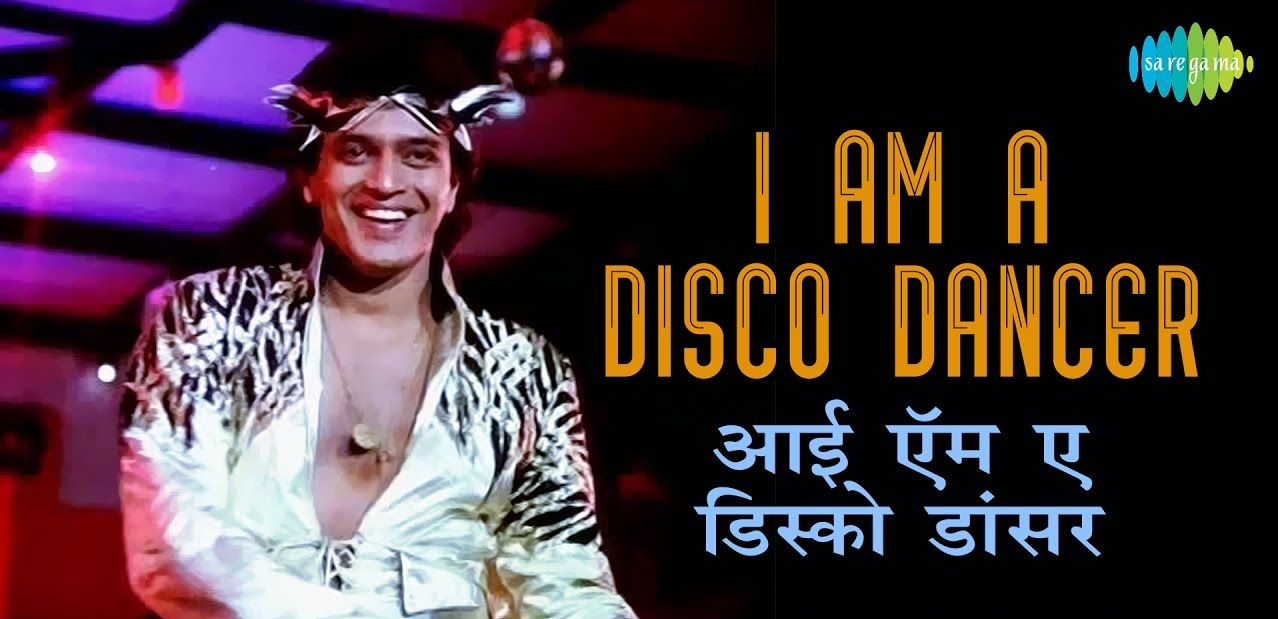Tagged: lahiri
The importance of being Bappi Lahiri
While Bappi Lahiri would continue to be celebrated for his very strong imprint on the musical legacy of India, his larger contribution in the social space remains as melodic and charming, if not more, with its own pronounced rhythm and bass. Because despite seemingly being a 1970s and 1980s music icon, Bappi Da inadvertently became the new India story for the generation that came into its own in the 1990s.
With the advent of Liberalisation and Globalisation, the changes that us 90s kids were witnessing were sudden and far too many, and my generation was scrambling for home grown icons that we could take pride in, and call our own. Somebody associated with beats of disco that were moving towards obsolescence already, some very brazen ctrl-c-ctrl-v accusations, and a pronounced regional accent in the Queen’s language perhaps was not what the doctor would have prescribed.
Only, in Bappi Lahiri, we did not just get an icon, but a superhero!
For this long haired short man flaunting the entire Kalyan Jewellers bridal collection, and then some, around his neck typified the spirit of the nation that we were to become, his capitalist-bull-in-a-socialist-china-shop personage breaking all the stereotypes that could have been. He embraced his obstinate confidence, he cradled his true blue rockstar credentials, he snuggled to his blings and glares, and in the process, he gave a big, big bear hug to us, to the India that was emerging. Highlighting that it was okay to believe in one’s supreme awesomeness, and that’s how any success story must begin. That we were no less than the others, that we were a strong, parallel force, complete with this luminescent luster that was both inside and outside of us, that even if we were questioned/ challenged/ ridiculed, we had reasons to be assured and optimistic, that we were ready to take on the world at our own terms.
Bappi Da’s public persona gave us the confidence to redefine cool, and create the idea of the lassi-in-a-can India that was blatant and unabashed and cheeky, ready to take off, and take on, and how! The man was Made in India much before aatmnirbhar became a part of our social lexicon. He gave us both coolth and comfort. And that’s essentially because he never tried too hard. The gold chains were naturally designed to be around him. The fancy sunglasses were mandatorily destined to cover his face. The self-comparison with some of the biggest international popstars was, therefore, the immediate and natural consequence. So what if he took inspirations ranging from Beethoven’s Fur Elise to UB40 to Modern Talking, he made them his own. He made them ours. This was him sticking it to the man, everything else be damned, and we loved it. The wheel, of course, turned a rather skewed full circle when he sued Dr. Dre for lifting one of his songs, Kaliyon Ka Chaman, and triumphed! We smiled. We chuckled. We laughed. We had arrived. We had won. The Kohinoor may still adorn the crown, we had managed our reparations.
Superhero. Bona fide superhero.
In my 10 years at MTV between 2000 and 2010, the decade that MTV was needed in India to shape and shake perceptions, Bappi Da and his personality consistently hovered around in our promos, shows, interstitials, powerpoints, the works. Hell, he literally hung out in all our acts and actions! But it wasn’t his musical presence that we are referring to. Newer sounds had emerged in both the mainstream Hindi film and Indipop spaces, and he did not really latch on to either. It was his radiant, care-a-damn presence, reflective, again, of the times we were living in. That assured rockstarness. The joie de vivre. He wasn’t willing to leave us. We weren’t willing to leave him.
I don’t think we would ever be willing to leave him.
Thank you for making us what we are, sir! Pyaar kabhi kam nahin karna.

It was quite the time to Disco!
The last quarter of 1982 was extremely exciting in the history of India primarily for two reasons. The Asian Games came back to New Delhi after a gap of three decades. We realised that we were capable of rising above mediocrity as a nation and make our mark as a progressive and progressing country. Confident landmarks like Jawaharlal Nehru Stadium, Indraprastha Indoor Stadium and Khel Gaon got added to the Mughal-Lutyen landscape of the capital city, and became a part of the collective national modernisation dream almost overnight. We understood the power and impact of live TV, with the athletic pixels beaming across the country through seedha prasaran on Doordarshan. Offering solidarity to the cause, the TV screens started transforming from black & white to coloured, showcasing the buoyant hues of the tricolor like never before. Ath Swagatam Shubh Swagatam, we sang on 19th November at the Opening Ceremony, welcoming and celebrating the world and India, and I also suspect, the first mega-public appearance of Amitabh Bachchan after the Coolie accident.
The other big event in the life of India was the release of Disco Dancer.

B Subhash’s Disco Dancer is the rags to riches story of Jimmy (Mithun Chakraborty playing Mithun Chakraborty) who braves acute poverty to become India’s best disco dancer. Fighting the whims and fancies of his punishing fate and inner demons, Jimmy goes on to ace the coveted International Disco Competition, bringing joy, pride and honour to the nation and her people, one pelvic thrust at a time.
There is enough in Jimmy’s stimulating and sterling biography to shake, rattle and roll the viewers. As a kid, he is falsely accused of stealing by PN Oberoi, the evil rich businessman. His mother takes the blame and goes to jail. The mother-child combine is taunted and tormented with the cries of maa-chor-beta-chor (which, for the record, does not sound like what it is meant to sound like), and they leave Mumbai to settle in Goa. Jimmy grows up to sing and dance at local weddings, while Oberoi’s son Sam becomes the country’s most popular disco dancer, and a pompous ass with ill-fitting moustache and trousers. His manager David Brown leaves him because of his wayward ways, discovers Jimmy, and soon enough, Sam is dethroned. Side note: Om Puri playing a character called David Brown is why a lot people from the 1980s still have trust issues.
The now-famous Jimmy exposes Oberoi at a party, and also falls in love with his daughter. Outblinged and outsmarted, Oberoi gets his men to electrocute Jimmy through his guitar, but kills his mother instead. Jimmy gets Guitarphobia, developing cold feet at the Competition, unable to dance. That’s when Rajesh Khanna in a career defining special appearance as Raju Bhaiyya hams what looks like an entire episode of Kyonki Saas Bhi Kabhi Bahu Thi to motivate Jimmy, asking him to “Gaaaaa!”. The film is still called Disco Dancer. “GAAAAA!”, he beseeches and screeches. Jimmy gets his mojo. Oberoi’s goons kill Raju Bhaiyya to make him ham some more. Our hero kills them back. Oberoi gets electrocuted.
And they all lived happily ever after, thank you, Dr. Rahi Masoom Reza and Deepak Balraj Vij for the multicoloured glitter in your pen!

This may sound very simplistic and formulaic, thanks to my ha-ha-ha retrospective gaze, but for the 1980s cine-goers, nothing could be farther from the truth. Disco Dancer is not a film. It is a state of mind. This journey of the lowbrow to the high street is an electrifying – in more ways than one – celebration of the absurd and the awe-inspiring, the real and the surreal, the sounds and the silence. Disco Dancer is definitely not a film. It is the overwhelmingly viscous space between the trash and the transcendental.
The audiences, while rooting for the classic good-versus-bad tale, also played cheerleaders to what they thought was the emerging, new India. Where the macho hero could be a dancer, wear shiny clothes on stage and lungis at home, shake his limbs without any love-interest around for most part of the film, be surrounded by fangirls, and still have his mother feed him food with her own hand. This was a protagonist hitherto unseen. Not a brawny rebel, but an artiste, a performer. Who could fail and clam up and cry, but finally emerge victorious. Because maa ka aashirvaad. That a primarily western and alien concept like disco could be mainstreamized, with quintessentially Indian storytelling and a central character that never would exist in real life is what got the audiences to the theatres. Then you had the emotions, struggles, failure, success, vengeance, love and drama. Also, Jesus Christ and Krishna. Plus, a mandatory Rahim Chacha, thank you.
Disco dancing became us.

While there was not much to talk about the country’s economy, militancy was rearing its head in Punjab, mills in Mumbai were coming to a standstill, and the honourable Prime Minister was publicly throwing out her widowed daughter in law from her home, we were still dancing. Maruti Suzuki was on the threshold of giving the middle-class-middle-brow India wheels that they had never imagined, Amitabh Bachchan was gearing himself to get back to the studios after a long stay at the hospitals, Chambal dacoits had started wilfully surrendering, Kaur Singh and Satpal were trouncing their opponents at the Asian Games in Boxing and Wrestling respectively, Jimmy was crushing the disco kings and queens from Afreeka and Paris. Things were beginning to look up. Toh jhoomo, toh naacho, aao mere saath naacho gaao. We had reasons to believe. Backed by Bappi Lahiri’s music. And moustachioed men wearing ballerina dresses complete with tutus.
The Buggles may claim that Radio Killed the Video Star, but Auva Auva belonged to Bappi Lahiri and Usha Uthup. Jesus by Tielman Brothers could become the ballad of Krishna, and Jesus did not really mind it seeing the perfect fit. The ultimate winner of the film, though, was the title song, I’m A Disco Dancer. The song starts with Mithun jumping on the stage, and then freezes on a screaming woman’s face for almost 5 seconds. That, in a nutshell, sums up the impact of the film on its audiences. Hypnotic and frenzied. It wasn’t as if Mithun Chakraborty’s histrionics or Bappi Lahiri’s music had any novelty value. Ravikant Nagaich had previously gifted Surakksha, Sahhas and Wardaat to the audiences. But Disco Dancer turned out special because of its very universal, very identifiable theme. The synthetic saga of tribulations and triumphs scored because of its straightforward simplism. And not just in India. It was the first Indian film to pocket 100 crores worldwide, with Goron Ki Na Kaalon Ki becoming an unlikely anthem across countries!
The impact of Disco Dancer was pretty much like the Asian Games. It made us feel all good and gooey till the next big jamboree. The beats were lost to the Madrasi eyesores featuring Jeetendra, and then to the Nadeem Shravan onslaught. Mithun went on to do Ooty films. The buzz around Kaur Sing and Satpal was forgotten already.
But what a thrilling high it was when it lasted! It was quite the time to disco.
(first published on Arré)